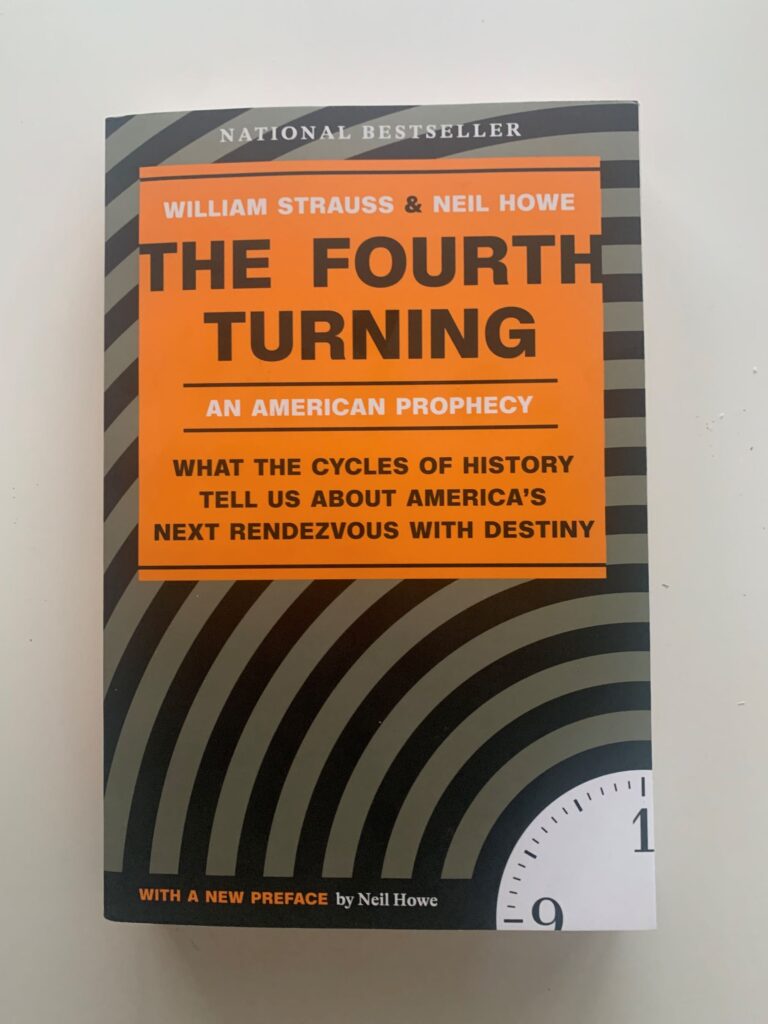What can I say, there is a lot here. As I read further, I get a little more confused or muddled because of the context switching and lack of total command of the subject matter. This is one of those books I should probably read more than once to get the best value from it. But, never fear. I am doing my best to get an accurate explanation out.

Generations I get. Seasons I get. Architypes I get. Moving from architype to season to generation, not so much. Let me try to use an example. I am Generation X. At the time the book was written, it was called Generation 13, Gen-X had yet to be universally adopted as Gen-X was used to describe the very latest Baby Boomers (more on that in a bit).
Based on my current age, my season is Fall. Zero to 20 is Spring, 21-40 is Summer, 41-60 is Fall and 60+ is winter. When the book was written, I was in Summer so you have to keep remembering the context of theory and not trying to tie in current day which is somewhat confusing.
Now this is where things get kind of confusing. My architype is nomad. This has to do with the characteristics of my generation. One word to describe that would be alienated. In contrast, the GI generation was the Hero – heroic generation, the Korean war vets (Silent) were the Artist – sensitive and the Baby boomers were the Profit – narcissistic generation.
Imagine the confusion when the book bounces between 13ers/Gen-X/Summer/Nomad. Not only do you need to master time context but also the terms. As I am reading I have to keep recalibrating that calculus to follow along. But it is all good.
This chapter is all about seasons, so hopefully we have all the basic vocabulary down finally. The point is that as the generations move through time, they have roles to play. As an example Fall is the season that generation assumes power or control. In theory, at this time Generation X should be becoming the predominant generation for power.
We should all know from national politics that Trump is a Boomer and Biden is the Silent Generation. As far as VPs go Harris is Generation X and Vance is a Millennial. I think the fundamental question is will Generation X ever assume control? This chapter answered one of my fundamental generation questions. There is a hard line in terms of generation inclusion based on birthdate. But, the reproductive cycle is unpredictable.
For this reason, Boomers and Gen-X have had children that fall into the Millennial generation. The generation that is the most powerful (usually the largest) will have undue influence over the new generation. For this reason, we are seeing the Boomers still hanging on in politics and business leadership. But it goes much farther and deeper than that.
It has to do with societal group think. What are the school board policies? How should the public react to untested vaccines? Gay marriage? Marijuana? Even though a generation might universally agree with positions, it wasn’t until the Boomers were solidly in power that we saw those changes come into effect.
For that reason, I suspect that the Millennials will shortly grab the torch from the Boomers. We will likely see adoption of Trans rights when that generation is solidly in power. Where do those ideas come from? Their spring season of course. Remember which generation had undue influence, the Boomers. See, it is not that hard.
Given that Boomers were born all the way to 1964, that puts the very youngest at 61. It is very likely that Trump will be the last Boomer president. Though not impossible to have one last Baby Boomer president, are we ready for a Gen-X or Millennial president? Ready or not, here it comes and all that goes with it.
End Your Programming Routine: I definitely could have written a lot more today. I feel like I have a much better handle on generations and what there are influences and why. If you are not reading with me, then you are definitely missing some stuff. As an example, the book uses famous names to the generations as well as more than a one word definition to the Archetype. That also helps with context.
Recent Comments